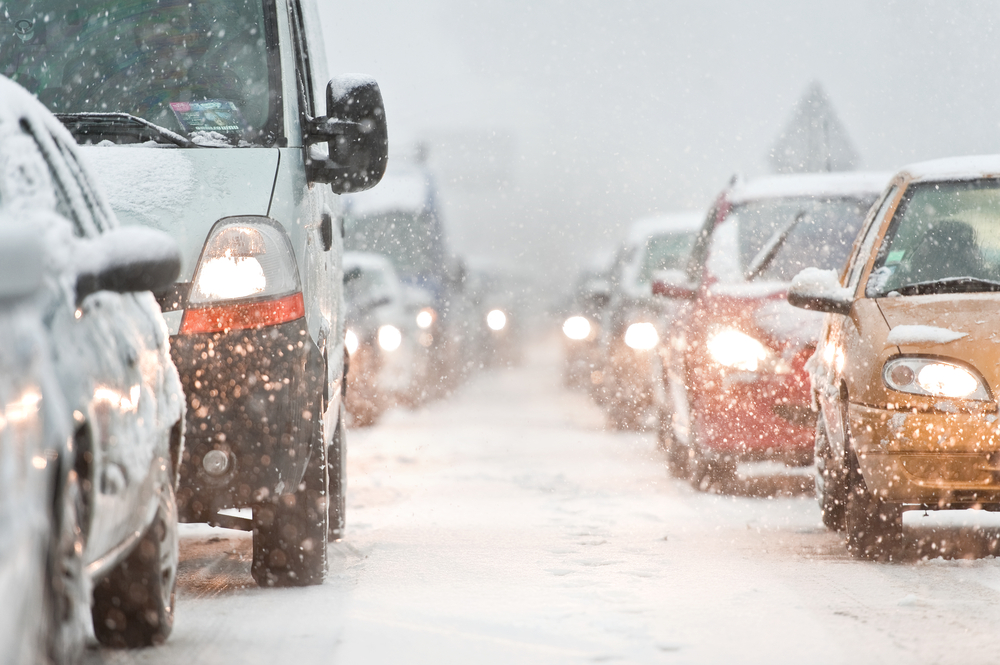
Protective Agency Winter Driving Tips
Thursday, February 22, 2018
Winter hits each part of our country differently, but chances are most of us will experience winter driving conditions at some point in our lives. The better we drivers can adjust to these conditions, the better chances we have of driving safely, and getting where we need to go without harm or injury to ourselves or others.
Driving in the winter can be intimidating, but there are a few simple ways you can make your trip run smoothly, no matter what the road conditions may be. Here are a few winter driving tips to consider the next time you’re out in adverse conditions, no matter where in the country you happen to live.
Winter Driving Conditions
Winter driving conditions can include fog, rain, slush, hail, sleet, snow, ice, and a variety of combinations of the above. The roads might be wet, icy, or snowy, and visibility could be decreased because of precipitation, fog, or snow obscuring lane boundaries. Basically, driving in the winter can get a little hairy, which is why keeping your cool and knowing how to handle these conditions can help you be a safer driver.
When in doubt, slow down. If visibility is low, even the most familiar of roads can seem dangerous and scary. Even if you think you know what’s up ahead, be sure to slow down and anticipate the unexpected.
Having working brake lights can be a huge benefit for winter driving. You always want to make sure that the cars behind you can see what you’re doing, especially on less visible or slick roads. Secondly, decelerating slowly can give drivers behind you the chance to react to conditions up ahead, and decreases the chances of having to slam on their brakes.
Winter Driving Tips
Besides driving slowly, there are some other helpful winter driving tips to make it easier to get where you need to go safely. One method of preventative precaution is to have the right kind of auto insurance to fit your needs.
When driving in the winter, remember to:
- Drive slowly
- Communicate clearly with other drivers by using your emergency lights, brake lights, and blinkers
- Be aware of your surroundings, the weather, and other drivers
- Don’t drive distracted
- When speeding up or slowing down, give yourself a lot of room to do this slowly and steadily; slamming on your brakes or the gas will cause your car to skid and not maintain proper traction with the road in some conditions
- Maintain a distance of 8-10 seconds from the car in front of you, rather than 4 seconds on a clear and dry road
- Don’t stop if you can avoid it
- Don’t stop on a hill
- Make sure your tires are properly inflated
Drive Safe This Winter
Car accidents and emergencies do happen, so there are a few ways you can help protect yourself and your car in these situations. It’s always helpful to have a few pieces of emergency gear stored in your car. This emergency pack can include bottled water, some food, flares, snow chains, an ice scraper, a radio or battery charger, blankets, and other supplies you might need if you’re stuck in your car for some time.
If you’re in an accident and the weather outside is dangerous, staying in your car is a good way to keep warm.
Secondly, try to keep your gas tank at least half full if you’re doing any winter driving. You never know when road conditions will cause road closures or detours, so it’s smart to plan with a margin of error when it comes to fuel for your vehicle.
Many of us warm our cars up before we leave the house in the winter, but doing so in an enclosed space (like a garage) can increase your chances of carbon dioxide poisoning. Always warm up your car in a space that has a supply of fresh air moving in and out.
Our final winter driving tip is to stay inside if you don’t need to go out. If you’re involved in a winter car accident, having the right kind of car insurance can help you fix the damage and get back on the road.
To learn more about winter driving tips and insurance that can prepare you and your car during the colder months, contact our team at ProtectiveAgency.com or call (877) 739-9367. Our licensed insurance agents will be happy to answer any questions you have. Drive safe!
